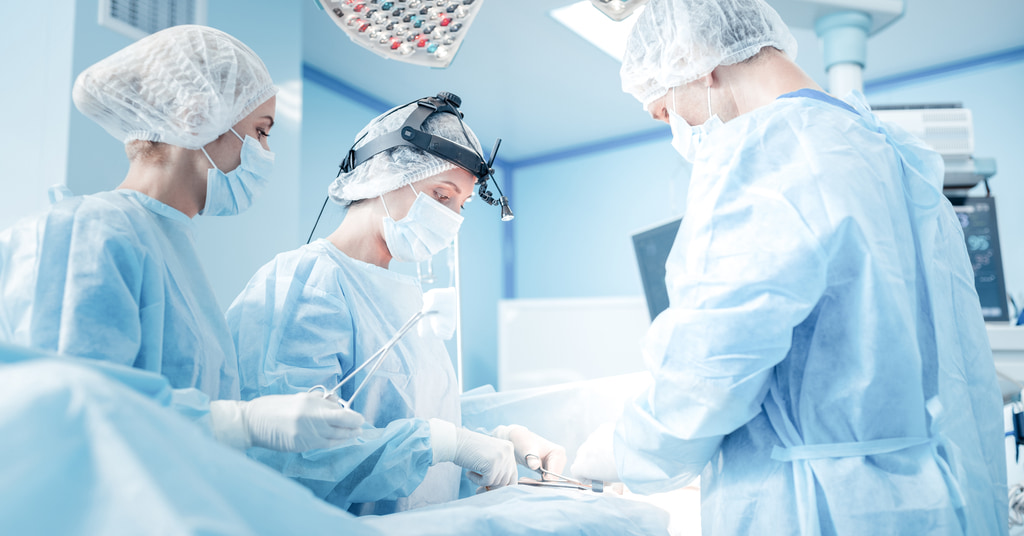Written by Sarah, PA-S
Sarah A. is a PA-S who recently completed her surgery rotation, and she has some great tips for any students preparing for a surgery rotation. Here are Sarah’s experiences, suggestions and encouragement related to the surgery rotation . . .
This rotation was the hardest rotation I’ve ever had, but also by far the most rewarding. I’m going to be honest surgery is…
Emotionally Exhausting – if you are a driven student, it’s easy to feel like you aren’t good enough because the learning curve is so steep.
Physically Exhausting – because you can have unexpected 14-hour days and surgeries that can last 8-10 hours long if complications arise, shifts can be draining.
Mentally Exhausting – in addition to studying for rotation exams, you also need to prepare by studying the surgical procedures you will most likely be quizzed on in the OR
The following are some tips that may help you succeed in your surgery rotation. Being familiar with these before your rotation will make it go more smoothly.
Before you step foot into the OR…
Make sure to change in the locker room. Change into the hospital-provided OR scrubs and make sure you also have a headcover, mask, and shoe coverings.
Check the OR schedule to identify which room the surgery will be taking place. If you don’t see the surgery on the schedule, ask someone about it – things get shuffled around all the time.
Ok, you made it to the OR…
Walk into the appropriate operating room 30 mins before the surgery and introduce yourself to the scrub tech. Say, “Hello, my name is XX. I will be assisting Dr XX with this case, would you like me to give you my gown and gloves?” It’s good practice to grab your own gown and gloves before the surgery and give them to the scrub tech. Some places will not have someone available to help you don your gown and gloves, so be prepared to gown and glove yourself just in case.
Also, write your name on the board for the scrub nurse before the surgery begins. Ask the nursing staff if there is anything else you can help with.
Other things to help with:
Try to open any packages they ask for your help with (it’s important to open them away from you, without touching the inside contents)
Transfer the patient from the gurney to the operating table (beware of lines and IVs), and prep the patient for surgery (eg, positioning and securing the patient). The staff may even allow you to catheterize the patient if applicable. Be as helpful as you can be, but check with the staff before acting. Every OR has a flow, so be conscious whether you’re being helpful or getting in the way. Last but not least, if you are not sterile don’t touch anything blue! Blue = Sterile.
Before you scrub in for surgery, make sure you have eye protection and a mask on. Your face is not sterile and if you’re scrubbed in, you’ll have to break the sterile field to put on protection.
If the patient is receiving general anesthesia, the best time to scrub in is usually after the patient has been intubated and positioned, and their skin is adequately sterilized. The goal is to scrub in before your preceptor, but also not too early to avoid standing around.
Remember when you are in the OR, the scrub tech is always right. Even when the scrub tech is wrong, they are always right. If they tell you that you broke the sterile field or that you need to re-scrub, do so without hesitation.
Advice on being quizzed in the OR:
Let me just say you can’t avoid this. Also, even if you get every question right, they will ask you until you get something wrong because they want to teach you something. When you get asked a question you don’t know, here is how you should respond:
If you don’t have an educated guess say, “I’m sorry but I will look that up.” Some preceptors will not give you the answer to these questions and if they don’t, make sure to look it up! But if your preceptor gives you an answer to a question, then you better remember! They will ask you these questions again. Being asked twice and still not knowing the answer will reflect poorly on you.
Whenever I would get out of surgery, I would make an effort to write down all the questions I could remember. When you are scrubbed in for surgery, you can’t write anything down because you are sterile. It’s hard to keep these ideas at the forefront of your mind, especially when you are so focused on the actual surgery, but make a conscious effort to remember these questions.
During Surgery
Do not touch anything unless the surgeon says it’s okay – this includes the patient, their organs, any instruments, and especially the mayo stand. Remember, your back is not sterile so be careful where you turn your body. Basic things all students should be able to help with are: suctioning, retracting, following when doing a running suture, and cutting sutures. Ask questions, but read the room. There are inappropriate times to ask questions in the OR – don’t ask questions if the surgeon is dissecting, suturing, resection, or occupied with the surgery.
Skills to practice
1. Be comfortable with your instruments and practice appropriate grips
- Needle Driver: When using, insert thumb and ring finger into rings. Pros will be able to palm the driver
- Forceps: Hold your forceps like a pencil
- Scissors: Slide the tip of the scissors down to the knot, turn 45 degrees, then cut for short tails
2. Know your ties
- Instrument tie: You have to know how to do an instrument tie – usually you do 4 throws
- Two-handed tie: If you are ambitious, learn this tie
- One-handed tie: If you have a future in surgery, I would recommend learning this tie
3. Suture techniques to practice prior to surgery rotation
- Deep dermal is the most common stitch I performed – it’s used to close laparoscopic ports. If you are an overachiever, you might want to learn subcuticular suture. This can be used for open inguinal hernias, breast augmentation closure, and abdominoplasty.
Most common procedures
Study for these surgeries (especially the surgeries in bold type)
- appendectomy
- hernia repair (especially inguinal)
- cholecystectomy
- diagnostic laparoscopy
- exploratory laparotomy
- colectomy- d/t diverticulitis or tumor
- colostomy/ileostomy
- lipoma excision
- pilonidal cyst excision
- lumpectomy/mastectomy
These resources were very helpful to study for surgeries:
- Surgical Recall textbook – this is good for pimping questions and is organized by surgery
- Touch Surgery iPhone/iPad app – this app is free and walks you through each surgery, step-by-step with a quiz at the end

Sarah is currently a PA Student nearing the end of her program. She is on clinical rotations and documents her experiences as a PA student and provides helpful tips for those in or interested in the medical profession. She does giveaways of resources that have helped her succeed, in hopes of providing tools for pre-PA and PA students to thrive.
She has a blog where she shares her PA school experiences, didactic study tips, how to rock clinical rotations, and emotional lessons for being in such an intense program. Follow her IG page @sarah.a_pa to witness the highs and lows of medical training in the middle of a pandemic.
For other tips for surviving PA school and PA school applications, visit her blog at motivationalmedicine.blogspot.com
If you are a PA student prepping for an upcoming PANCE exam and want to optimize your chances of success, click here for your FREE trial of our PANCE QBank. We’ll have you ready to ace the PANCE on exam day.




